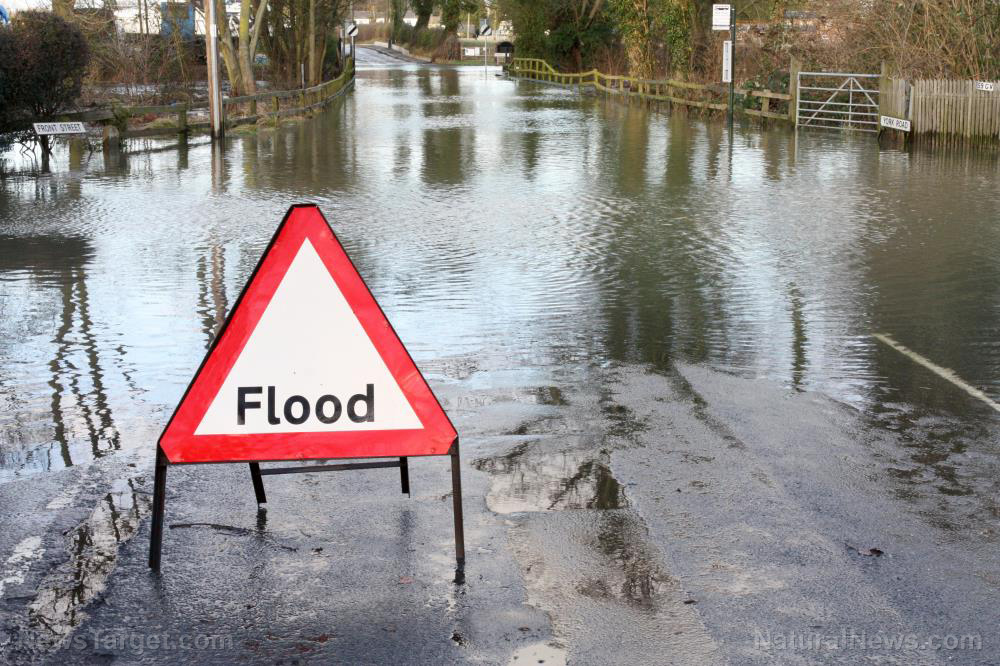Insurance giant Allstate loses $1.4 billion in May from catastrophe insurance claims
06/26/2024 / By Belle Carter

Insurance giant Allstate Corporation has reported that it lost over a billion dollars in one month from catastrophe insurance claims.
Allstate, headquartered in Illinois, suffered around $1.4 billion in pretax catastrophe losses in May. This amounts to around $1.1 billion in payouts after tax. This is triple what it paid out in catastrophe insurance in April, when losses amounted to around $494 million pretax, or $390 million after tax.
Catastrophe insurance is purchased by businesses and residences that wish to protect their property against natural disasters such as earthquakes, floods and hurricanes. Catastrophe insurance may even protect against man-made incidents such as riots or terrorist attacks.
The insurer noted that 14 events contributed to catastrophe losses for May. Seventy percent was attributed to five wind and hail events mostly in Texas, Colorado and Illinois.
“Total catastrophe losses for April and May were $1.89 billion, pre-tax, and total catastrophe losses for May year-to-date were $2.62 billion, pre-tax,” the report indicated. Allstate reached its $150 million threshold to report catastrophe losses in May, as it did in April when the company announced estimated catastrophe losses of $494 million from 11 events.
A year ago, Allstate recorded pretax catastrophe losses for May of about $885 million while the insurer’s catastrophe losses for the first quarter fell 56.8 percent to $731 million.
For the second quarter of 2023, Allstate’s report included net catastrophe losses of $2.7 billion, resulting in a net loss for the period of $1.4 billion. With monthly catastrophe losses, the insurer also gave monthly updates on implemented home and auto insurance rate increases. For 2024, Allstate raised the top of its Nationwide excess catastrophe reinsurance tower to just over $7.9 billion, with a retention of $500 million.
Human knowledge is under attack! Governments and powerful corporations are using censorship to wipe out humanity's knowledge base about nutrition, herbs, self-reliance, natural immunity, food production, preparedness and much more. We are preserving human knowledge using AI technology while building the infrastructure of human freedom. Use our decentralized, blockchain-based, uncensorable free speech platform at Brighteon.io. Explore our free, downloadable generative AI tools at Brighteon.AI. Support our efforts to build the infrastructure of human freedom by shopping at HealthRangerStore.com, featuring lab-tested, certified organic, non-GMO foods and nutritional solutions.
According to a separate approximation by the consulting firm Aon, severe convective storms in May, including a derecho system that moved across Gulf states, potentially caused billions of dollars in estimated insured losses.
“Given the extent of damage and the exposure centers hit by the event, it is very likely that the event will result in losses in the billions of U.S. dollars,” Aon reported, referring to the derecho. “Additional, noteworthy impacts were caused by the thunderstorm activity.”
Meanwhile, competitor Progressive last week said that severe storms mostly in Texas and the Midwest caused about $722 million in net catastrophe losses in May.
Catastrophes, as defined in the insurance industry, refer to severe disasters for which claims are expected to reach a high dollar value or $25 million or more in insured property losses, ten deaths and 50 injuries reported in people. Catastrophe losses are of critical concern for many as entire families’ lives are completely upended by destruction, leaving their financial situation completely in question.
So-called “climate change” is making insurance more expensive
Extreme weather events, which globalists attribute to climate change, are causing great destruction. Naturally, these events force insurers to increase their premiums where they can.
“Basically, if there is more damage, someone has to pay for it,” said Ernst Rauch, a climate expert with German reinsurance company Munich Re. This means that either insurance companies, the state or the person who suffered the damage must shoulder the expenses.
Previously, since catastrophes do not happen on a regular basis, only a few suffer losses and receive compensation from insurance companies. However, as global elites continue to roll out propaganda about more people being hit by losses because of “climate change,” insurance companies continue to increase premiums for insurance holders. (Related: Travel insurance industry launches new scheme to exploit irrational climate change fear among travelers.)
Some extreme events may be too costly to cover that insurance companies just pass on. At times, the perceived risks are too great that insurers no longer want to insure certain parts of the world, or they have to raise premiums to such an extent that no one is willing to pay them.
One such example is State Farm. The insurance company has stopped selling insurance policies in California, citing the growing risk of catastrophes, steep construction costs and a challenging reinsurance market. In California, insurance companies had to cover between $1 to $3 billion in damages annually over the past decades, Rauch noted. These days, however, annual insurance claims have jumped to well over $10 billion, he added.
Visit DebtCollapse.com for more stories like this.
Watch the video below where Biden’s new climate envoy John Podesta magnifies the climate change narrative.
This video is from the Prisoner channel on Brighteon.com.
More related stories:
Dubai “rain bomb” took place due to heavy rainfall and poor drainage – not climate change.
Meteorologist predicts global warming will be dead by 2030 – and reduced CO2 will hurt the planet.
Sources include:
Submit a correction >>
Tagged Under:
Allstate, bubble, catastrophe hazards, catastrophe insurance, Climate, Collapse, convective storms, debt bomb, debt collapse, disaster, environment, financial riot, insurance, losses, market crash, money supply, natural disasters, pensions, risk, Texas, weather terrorism
This article may contain statements that reflect the opinion of the author



















